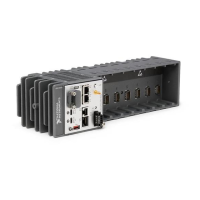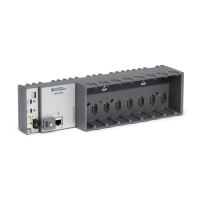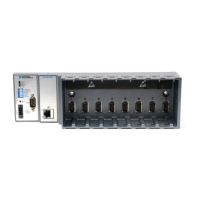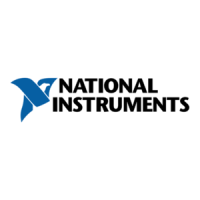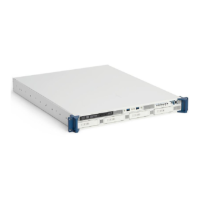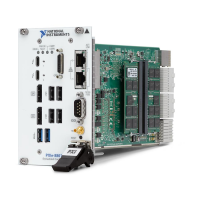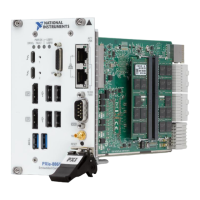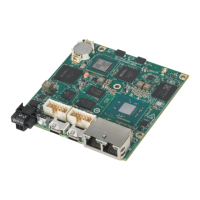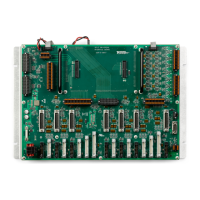© National Instruments | 2-5
NI cDAQ-9132/9133/9134/9135/9136/9137 User Manual
An acquisition that uses a start trigger (but not a reference trigger) is sometimes referred to as a
posttriggered acquisition. That is, samples are measured only after the trigger.
When you are using an internal sample clock, you can specify a default delay from the start
trigger to the first sample.
Using a Digital Source
To use the Start Trigger signal with a digital source, specify a source and a rising or falling edge.
Use the following signals as the source:
• Any PFI terminal
• Counter n Internal Output
The source also can be one of several other internal signals on your cDAQ controller. Refer to
the Device Routing in MAX topic in the NI-DAQmx Help or the LabVIEW Help for more
information.
Using an Analog Source
Some C Series modules can generate a trigger based on an analog signal. In NI-DAQmx, this is
called the Analog Comparison Event. When you use an analog trigger source for Start Trigger,
the acquisition begins on the first rising edge of the Analog Comparison Event signal.
Note Depending on the C Series module capabilities, you may need two modules
to utilize analog triggering.
Routing AI Start Trigger to an Output Terminal
You can route the Start Trigger signal to any output PFI terminal. The output is an active high
pulse.
AI Reference Trigger Signal
Use Reference Trigger to stop a measurement acquisition. To use a reference trigger, specify a
buffer of finite size and a number of pretrigger samples (samples that occur before the reference
trigger). The number of posttrigger samples (samples that occur after the reference trigger)
desired is the buffer size minus the number of pretrigger samples.
Once the acquisition begins, the cDAQ controller writes samples to the buffer. After the cDAQ
controller captures the specified number of pretrigger samples, the cDAQ controller begins to
look for the reference trigger condition. If the reference trigger condition occurs before the
cDAQ controller captures the specified number of pretrigger samples, the controller ignores the
condition.
If the buffer becomes full, the cDAQ controller continuously discards the oldest samples in the
buffer to make space for the next sample. This data can be accessed (with some limitations)
before the cDAQ controller discards it. Refer to the KnowledgeBase document, Can a
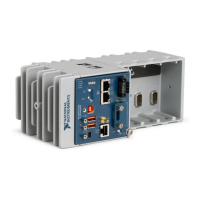
